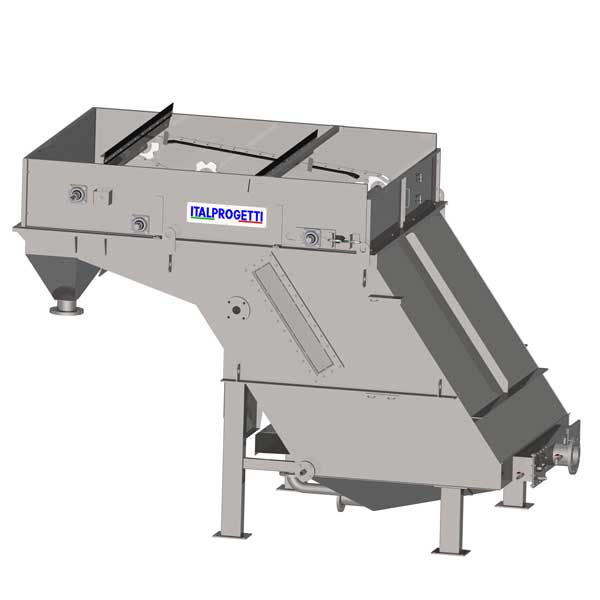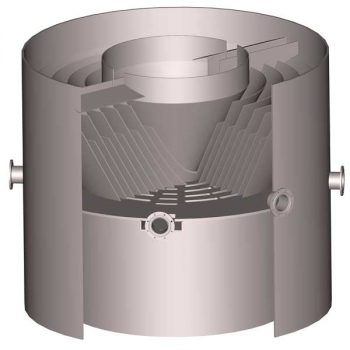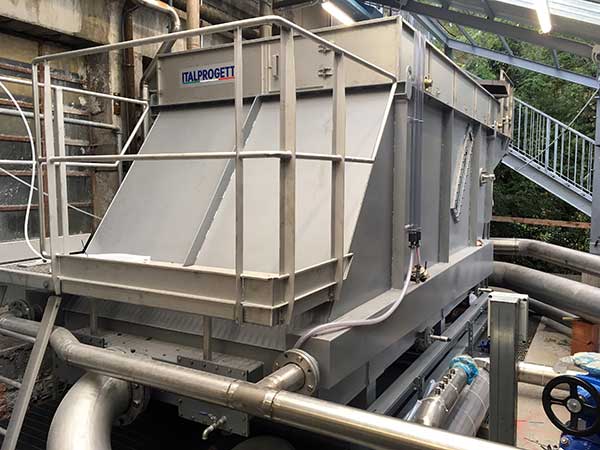
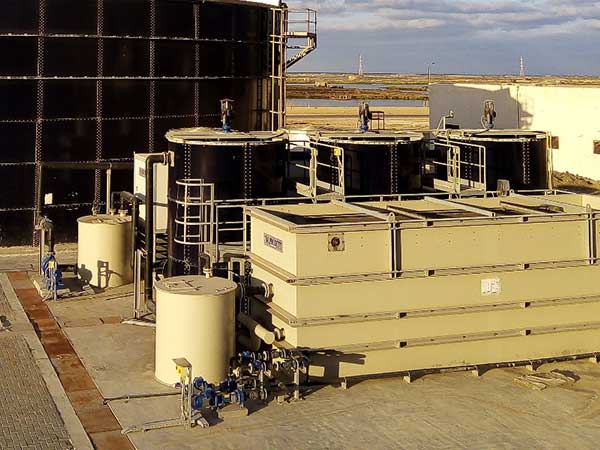
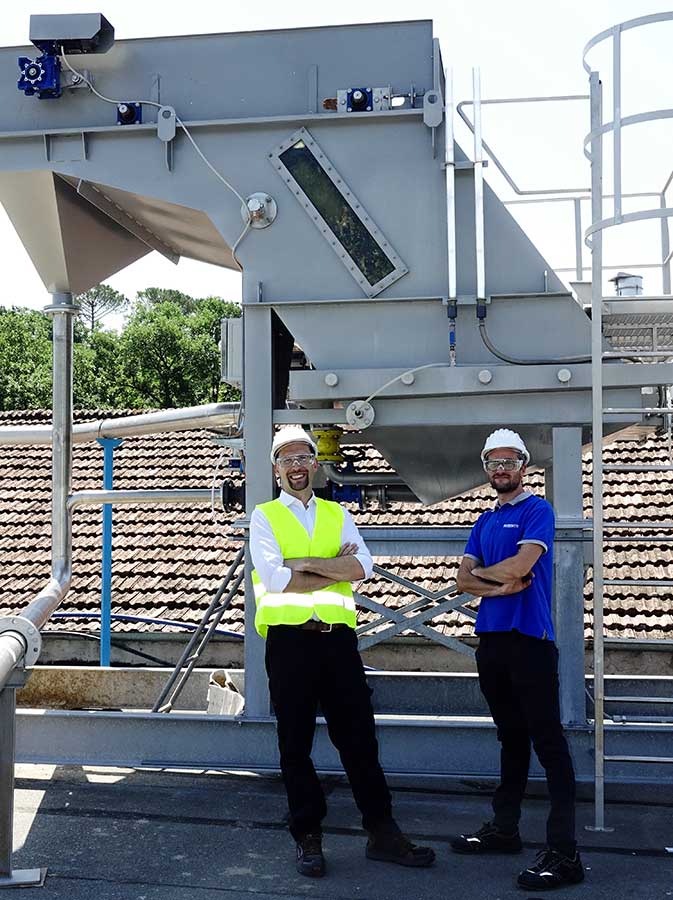
Dissolved Air Flotation principle
Dissolved air flotation is a treatment used to clarify the wastewaters from solids, by generating air bubbles in the effluent. A portion of the clarified waters is pressurized, saturated with air and send back inside the flotation unit. At the atmospheric pressure present in the flotation tank, this pressurized recirculation releases a big amount of fine air bubbles, that attach to the solids and cause them to rise. The solids that floats on the water surface generate a liquid sludge that is collected and removed.
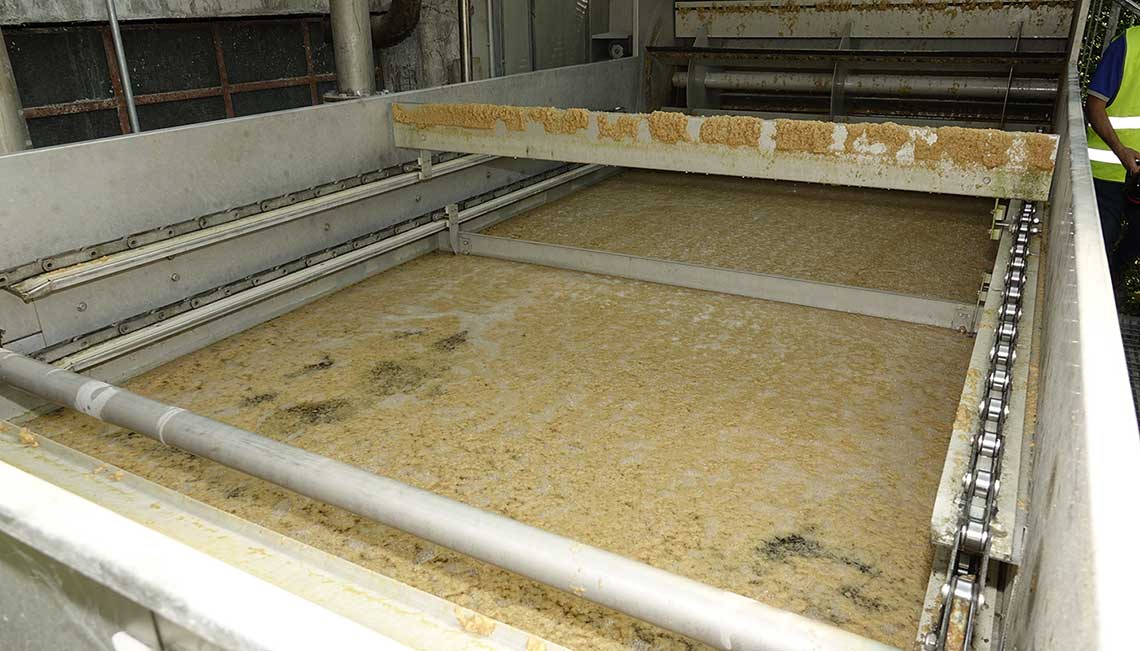
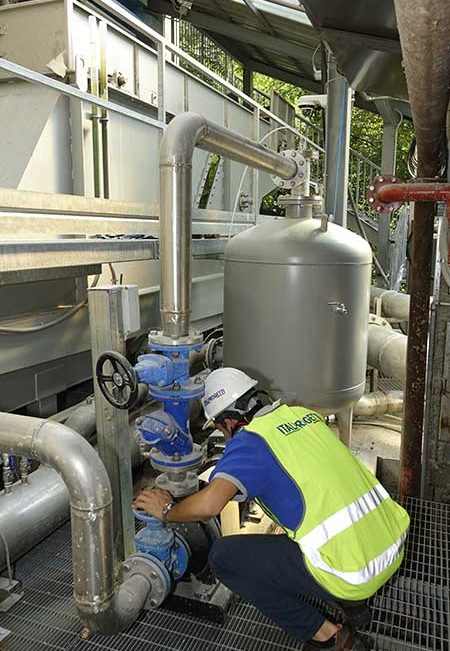
U-Channel technology
-
Optimal flow distribution among the entire lenght of the DAF unit.
-
Co-current flow between water and floating solids in the first phase of the separation, reducing the clogging risks tipicaly present in the conventional lamellae DAF.
-
Count-corrent flow between water and solids in the second separation phase, which allows an high clarifaction degree of treated waters.
Application & Characteristics
-
Optimal for paper-mill, tanneries, food industry, Oil&Gas, municipal wastewater treatment
-
Capacity up to 600 m3/h
-
Manufactured in AISI316 or PP for maximum corrosion resistance
-
Explosion proof according to ATEX standards (on request)
Benefits
-
Large distance between the U-channel
-
Extremely robust and reliable, no-clogging characteristics up to 10g/l TSS
-
Optimal separation performance (up to 99,6% removal efficiencies can be achieved in many applications)
-
Extremely compact compared to other DAF technology
-
Easy to monitor and control
